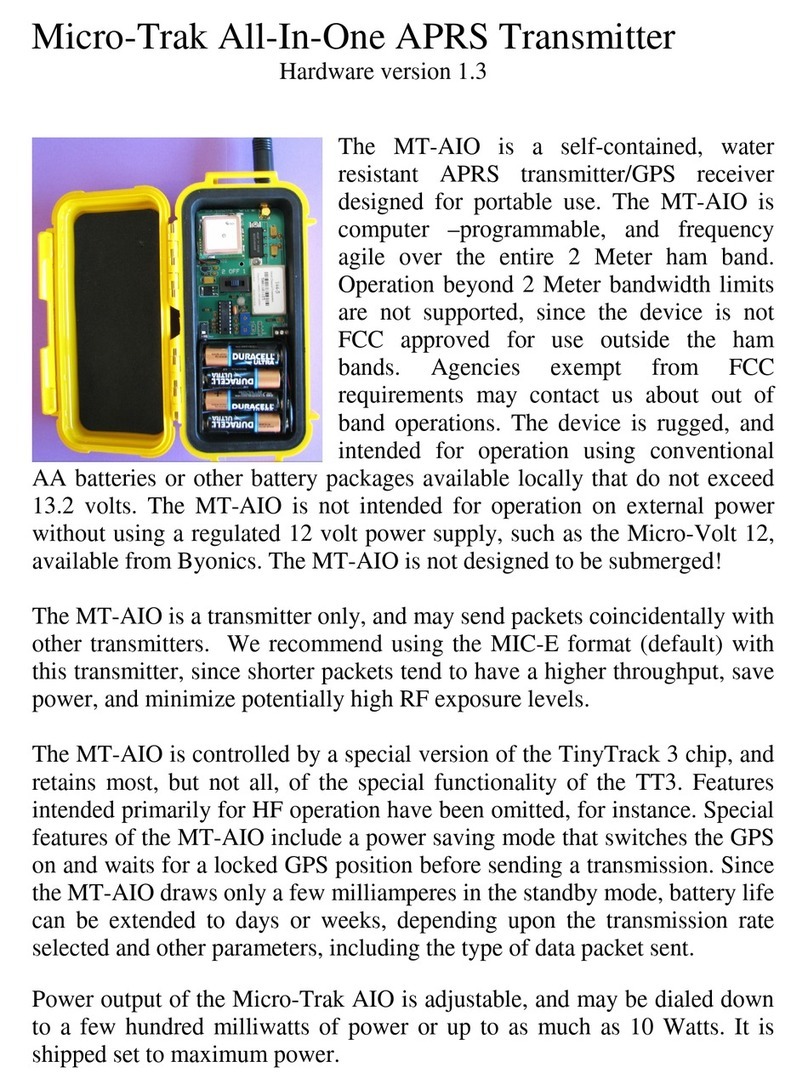
Settings
This section describes each of the MF-50 user settings.
Tone Speed: The time, in ms, for each tone sent in the tone sequence. A smaller number will make the tone
sequence play faster. Default is 50 (ms).
Tone Duration: The time, in seconds, the tone sequence will be repeated.
Loop Time: The time, in seconds, the transmission sequence will be repeated.
Initial Delay: The time, in seconds, before the first tone sequence is sent. The MF-50 will be off the air during
this time. This is usually set to 0, but may be used to sequence multiple transmitters, or to hide a transmitter
long before the first transmission begins..
TX Freq: The RF transmit frequency, in kHz. For example, to transmit on 146.565MHz, enter the value
“146565”.
Morse Message: The morse code text sent after the tone sequence. This is usually the operator’s amateur
radio callsign to keep the transmissions legal.
Morse Speed: The speed of the Morse Message, in words per minute (WPM).
Morse Tone: The audio frequency of the Morse message, in Tone sequence code numbers (2-49). See table
below. A large number is higher pitch. The default is 25 which represents 831Hz.
Tone Sequence: The description of the tone sequence to be repeated during transmissions. This is a string of
characters listed below. For example, the default tone sequence is described by the following string of
characters (shown between square braces, which are not entered):
[ 3 3 *** 3 3 *** 6 6 /// 6 6 /// 9 9 333 9 9 333 ; ; 666 ; ; 666]
This sequence is equivalent to the tone code sequence below as used in the Byonics PicCon3 and BFoxCon:
01, 20, 01, 20, 01, 11, 11, 11, 01, 20, 01, 20, 01, 11, 11, 11, 01, 23, 01, 23,
01, 16, 16, 16, 01, 23, 01, 23, 01, 16, 16, 16, 01, 26, 01, 26, 01, 20, 20, 20,
01, 26, 01, 26, 01, 20, 20, 20, 01, 28, 01, 28, 01, 23, 23, 23, 01, 28, 01, 28,
01, 23, 23, 23























